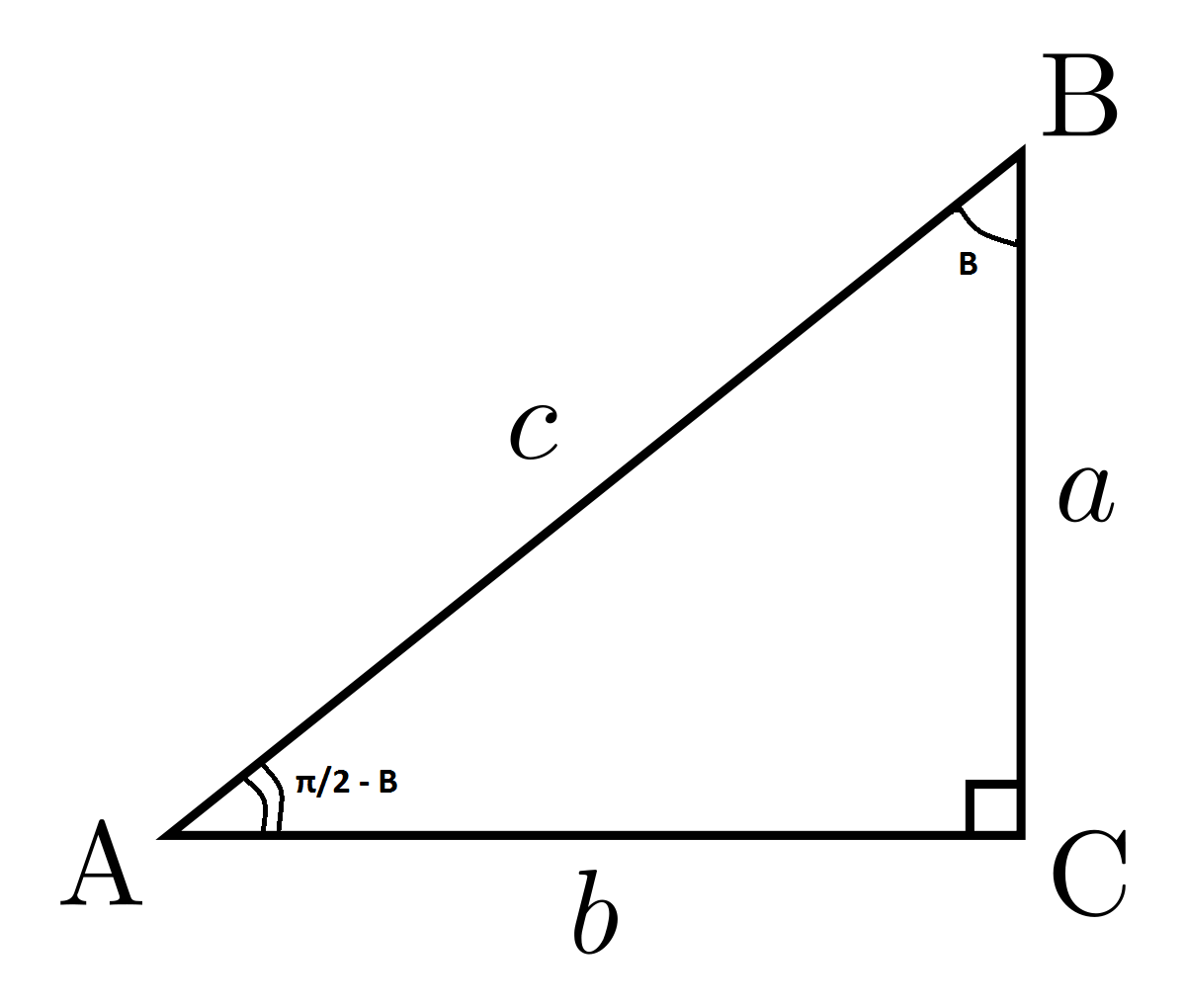Angle A is the complement of angle B. Which equation about the 2 angles must be true? A. Sin A = Sin B B. Sin A = Cos A C. Cos B = Sin B D. Cos A = Sin B Explain.
1 Answer
Equation D is true for all
Explanation:
Two angles
Taking each equation separately:
A.
Let's prove that this is wrong by finding a counterexample.
Let
B.
Let's use the same counterexample. Let
C.
This is exactly the same as relation B, so it must be false.
D.
We know that
Relation D is equivalent to saying
We usually meet angles

From this image and by using the definitions of sine and cosine, we can derive that:
Thus, we can see that
This proves that relation D is true.

